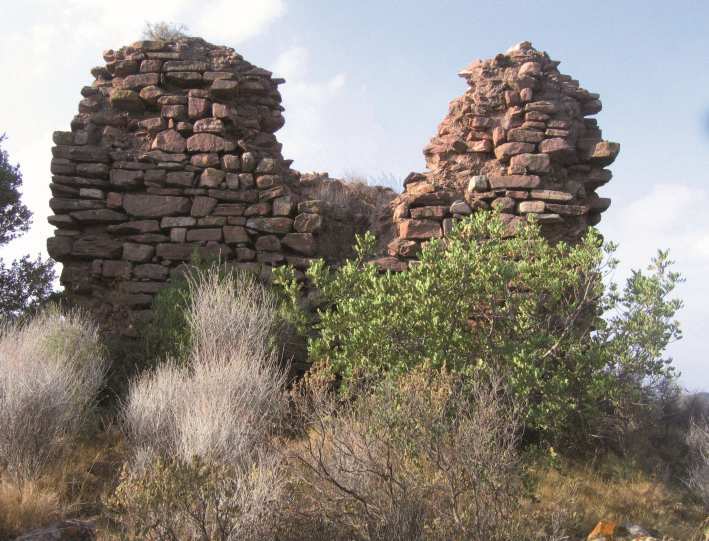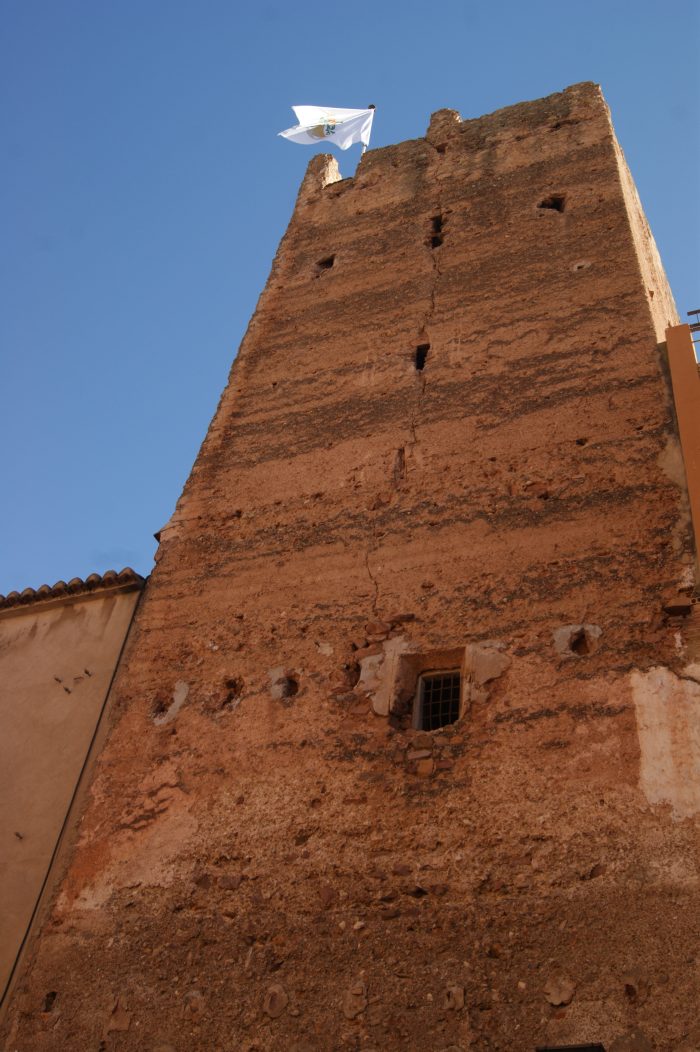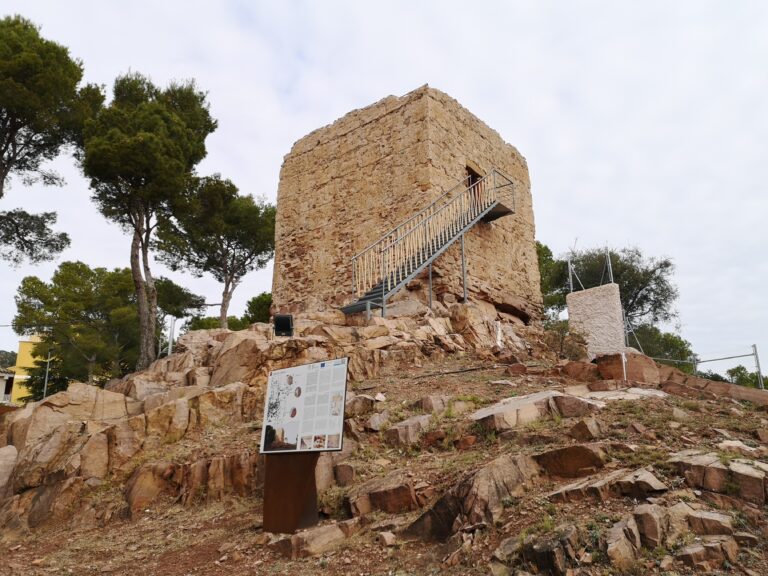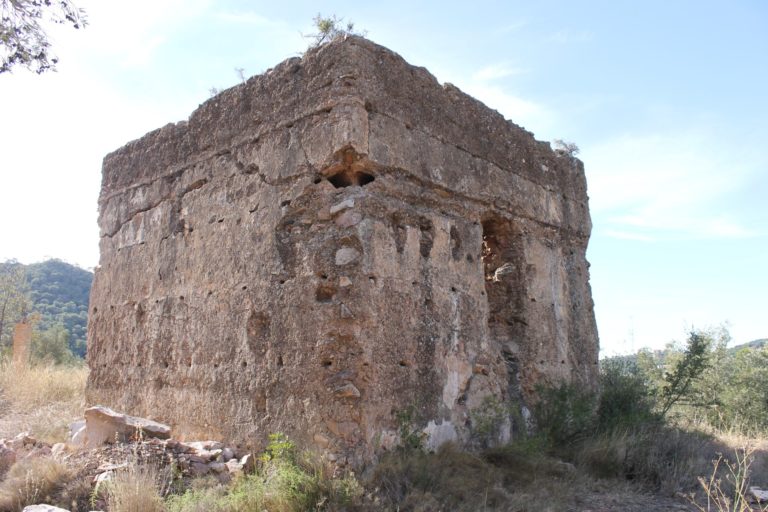Towers
Entering the Arab and Medieval period is possible in Serra following the silhouette of its sentry towers: there is the tower of El Senyor de la Vila, of L’Ermita, of Ria and, of course, the one of Serra’s Castle. The Castle and its sentry towers are proof of the importance that the mountain pass of Serra-Torres Torres must have had, as a natural road to travel either on foot or on horse to Aragon. These buildings of the 8th and 9th centuries stand proudly and were actively used during the Islamic rule and the posterior Mudéjar period.
The Castle and all the sentry towers and fortifications built around it must have been part of a much more extensive defence system, whose main function was to control the territory from València in order to defend the Taifa and the Kingdom of València.
Four towers are part of the fortress of Serra’s Castle. Three sentry towers (Ria, Ermita and Satarenya) and a defensive one (Senyor de la Vila).
Tower of El Senyor de la Vila
This tower is located within the town of Serra. This 9th-century building is of Islamic origin. Its main goal was purely defensive and military. It was a space where the town people could take shelter inside the fortress in case of grave danger. Until not long ago, attached to this tower, there was the Senyor de la Vila House, a building that server as temporary residence for Serra’s town lords and their entourage. There is proof that the tower of El Senyor was used as prison. Even if more than a thousand years have passed since it was built, its walls are still in good condition. The tower has endured the passing of the time and the construction of houses right next to it.
The remaining towers (Ria, L’Ermita and Satarenya) must have been sentry towers which had the mission, in part, of being a point of visual and direct contact between the Castle and the different towns nearby: Ria, Serra and Náquera, respectively. It is listed as relevant cultural heritage.
Tower of L’Ermita
Sentry tower of Islamic origin of the 9th century. It stands next to the Chapel of Sant Josep i la Creu, at the top of the Calvary. It offers good views over the town. The tower was part of the surveillance system of Serra’s Castle. It retains most of its main body, which has a square floor plant. Rammed earth and lime mortar were used to build its walls on a base of big rocks. It has an opening two metres up from the base. It is listed as relevant cultural heritage.
Tower of Ria
Sentry tower of Islamic origin of the 8th-9th centuries. Defence and surveillance building of the ancient town of Ria, which used to be in the immediate vicinity of the tower. The tower of Ria has a (mostly) square floor plant. Its stone and rammed earth walls were lined with lime mortar that is still visible today. The tower has a small opening which serves as entry. It is located next to the path that leads to the spring of L’Ombria, within the hiking itinerary number 1 (Castle).
The town of Ria dates back to the Iberian and Roman times, although remains from the Neolithic and Bronze Age have been found as well in the area. In 1563, Ria had 17 houses and around 90 people lived in them. The expulsion of the Moriscos (1609) emptied the village. Even though it was repopulated with ten (Old Christian) families, they would eventually move to Serra. Ria was definitely depopulated by mid-17th century. The tower of Ria is listed as relevant local heritage.
Tower of Satarenya
Sentry tower of Islamic origin of the 8th-9th centuries. It was part of the surveillance system of the castle. From it, sentries would control every movement in the area of Náquera. It has a square floor plan and its rammed earth walls were lined with lime mortar. The entrance used to be in the first floor, which is the only one that remains. You can reach the tower of Satarenya following the path of Les Vinyetes, on the forestry track heading to the Castle. It is listed as relevant cultural heritage.




